- Open today, 10 am to 5 pm.
- Parking & Directions
- Free Admission
In Memoriam: Jaroslava Brychtová (1924–2020)

Jaroslava Brychtová, one of the world’s most influential artists working with glass, passed away this month. She was 95 years old. The Chrysler is fortunate to be able to share the Czech artist’s talent and legacy with several outstanding examples in the permanent collection. Brychtová created the works in partnership with her husband, Stanislav Libenský, who passed away in 2002.
Brychtová and Libenský met in the 1950s and each had a distinguished artistic career in glass before they married in 1963. They worked together for more than four decades and were dedicated to teaching and developing a technically challenging and artistically bold body of work. As artists, they redefined the use of glass as a sculptural medium and exercised a profound influence on generations of Czech glass artists, leaving an indelible mark on the international glass community as well.
Working as a collaborative team, Libenský would begin an artwork by making a heavily shaded design drawing, which Brychtová then translated into a full-scale clay model. From this model, the mold for casting the glass was made. After the glass casting was completed, it was selectively ground and polished to enhance the form. Their monumental abstract cast glass sculptures, often in vivid colors, use the thickness of the glass to create patterns of light and shade.
The Chrysler Museum of Art purchased its first artwork by the talented husband-wife team in 1994. The following year, the Chrysler added a second artwork to the collection with funds donated by Renée and Arthur Diamonstein and the Art Purchase Fund. Further works by Brychtová and Libenský came to the Chrysler in 2013 and 2016–17 thanks to the generosity of Lisa Shaffer Anderson and Dudley Buist Anderson.
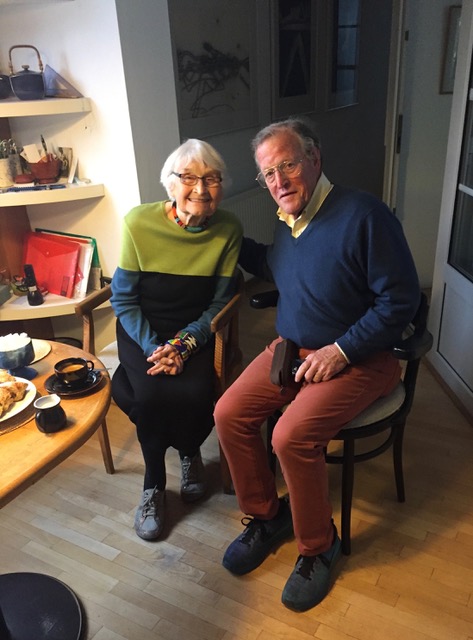
Chrysler Museum of Art Trustee Dudley Anderson with Jaroslava Brychtová at her home in Zelezny Brod, Czechia
These glass artworks in the Chrysler’s collection demonstrate the monumental scale and serene harmony achieved in the abstract forms for which Brychtová and Libenský are highly esteemed.
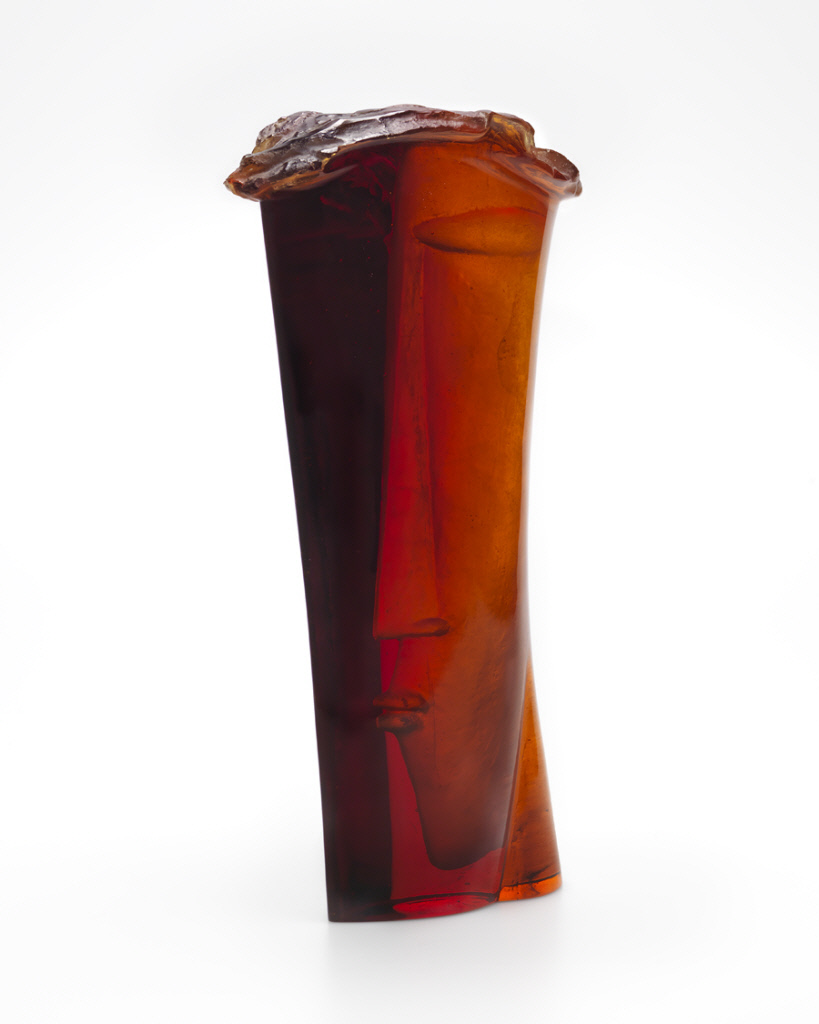
Head I (Red), late 1950s, Cast glass, Gift of Lisa Shaffer Anderson and Dudley Buist Anderson, 2017.30.1
Head I (Red), late 1950s
This figural artwork, cast in red glass, illustrates Brychtová and Libenský’s early interest in geometry and the relationship between light and shade. Reminiscent of work by early twentieth-century Cubist and Primitivist artists like Picasso, Modigliani, and Brancusi, the head is elongated and abstracted. The long narrow face is polished smooth to reveal the facial features through the glass, which contrasts with the matte finish of the hair. The planes of the rectangular form capture light and create shadows, adding a painterly contrast to what we see.
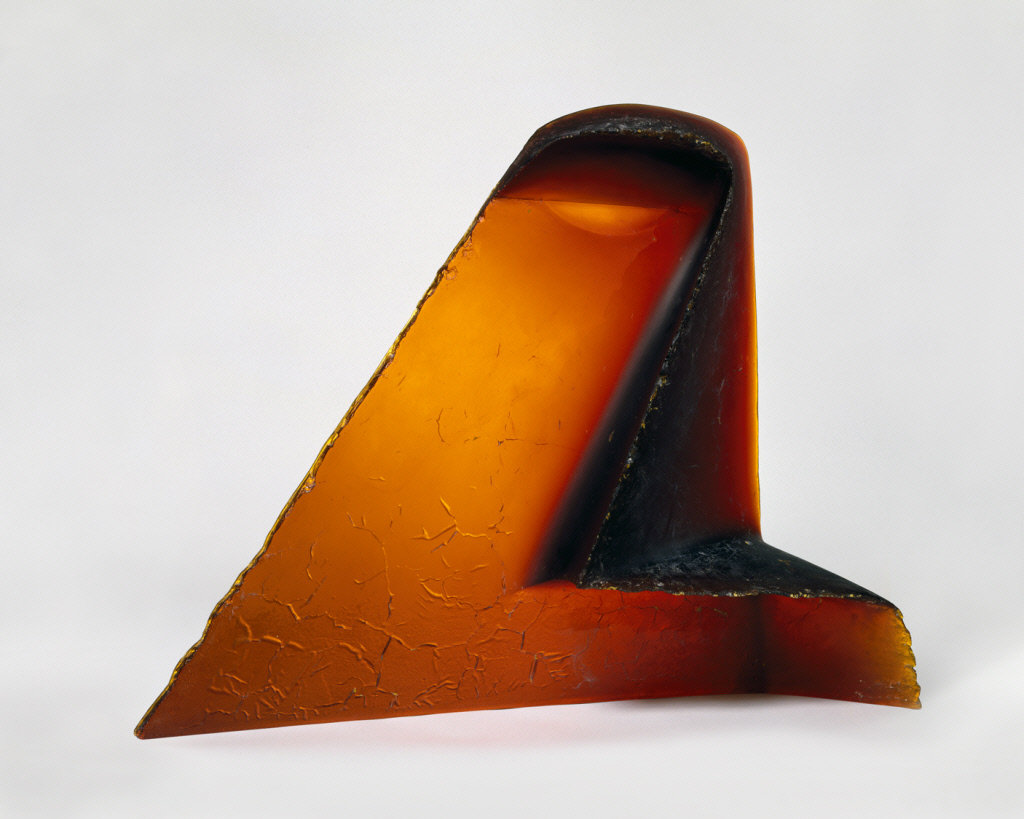
Red Head, 1990, Cast glass, ground and polished, Museum Purchase acquired with funds contributed by Arthur and
Renée Diamonstein, 95.38
Red Head, 1990
Like the earlier Head I (late 1950s) in the Chrysler’s collection, this sculpture depicts a human head and is cast solid in red glass. The later version, however, is monumental in size and much more abstract and geometric in its form. The shape is triangular while the facial features are more difficult to discern. The glass surface is now completely matte in its finish, drawing attention to the material used to make the sculpture. Light creates subtle color gradations as it moves through the cast sculpture; the color appears pale amber where the glass is thinnest and deep ruby- to burgundy-red where it is thickest.
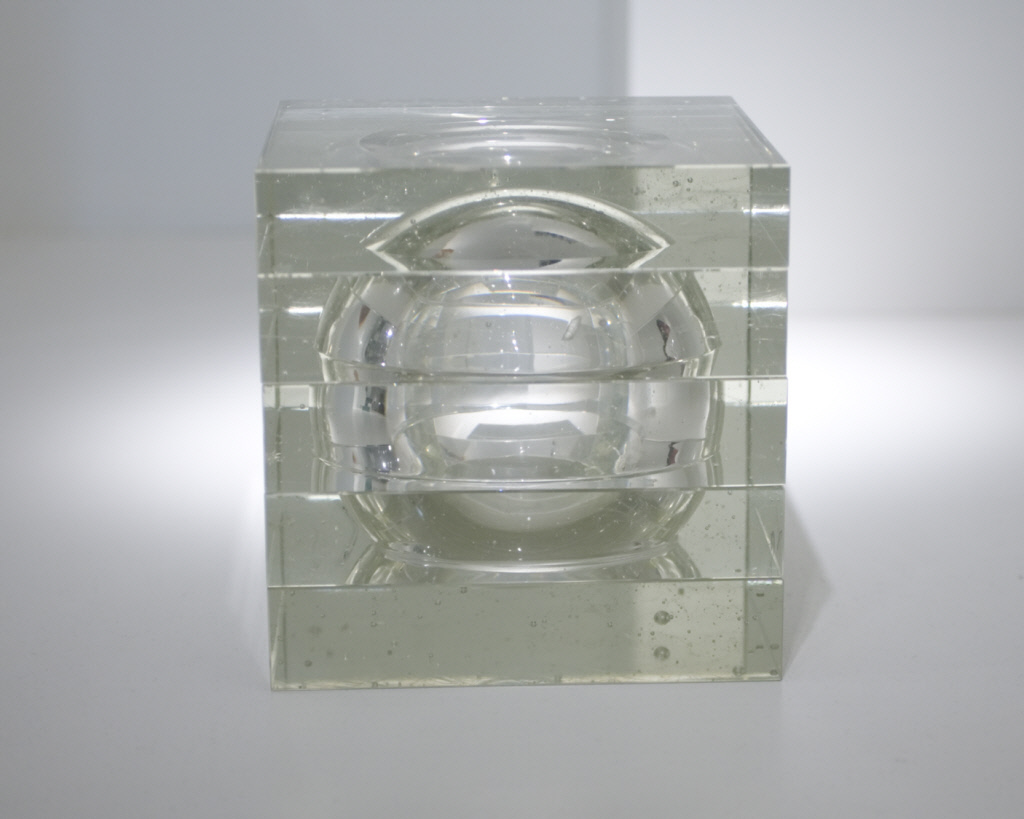
Cubus, 1967, Cast glass in five parts, cut and polished, Museum Purchase, 94.7
Cubus, 1967
Geometry is a central force and focus for many of the artists’ sculptures. This colorless glass sculpture is made up of long rectangular planes that have been assembled to form a cube. The sense of interior space is illusionary, however, as the sphere that seems to be present at the center is merely hollow space. Brychtová and Libenský often used internal voids to create form. The banding of the stacked rectangular planes also serve to distort light in a prismatic manner, attesting to the couple’s attention to and control of light.

Astronomical Calendar Sphere, 1994, Mold-melted and engraved glass, Gift of Lisa Shaffer Anderson and Dudley Buist Anderson, © Stanislav Libenský © Jaroslava Brychtová, 2016.18
Astronomical Calendar Sphere, 1994
Like the earlier work Cubus (1967) in the Chrysler’s collection, this colorless glass sculpture demonstrates the artists’ skill at exploiting the optical qualities inherent in glass. The smaller sphere in the center of the work is another illusion created with interior negative space (a small section is carved out of one hemisphere) and the reflection of light within the glass. It suggests the presence of a distant planetary body—perhaps one that an astrolabe might point to.
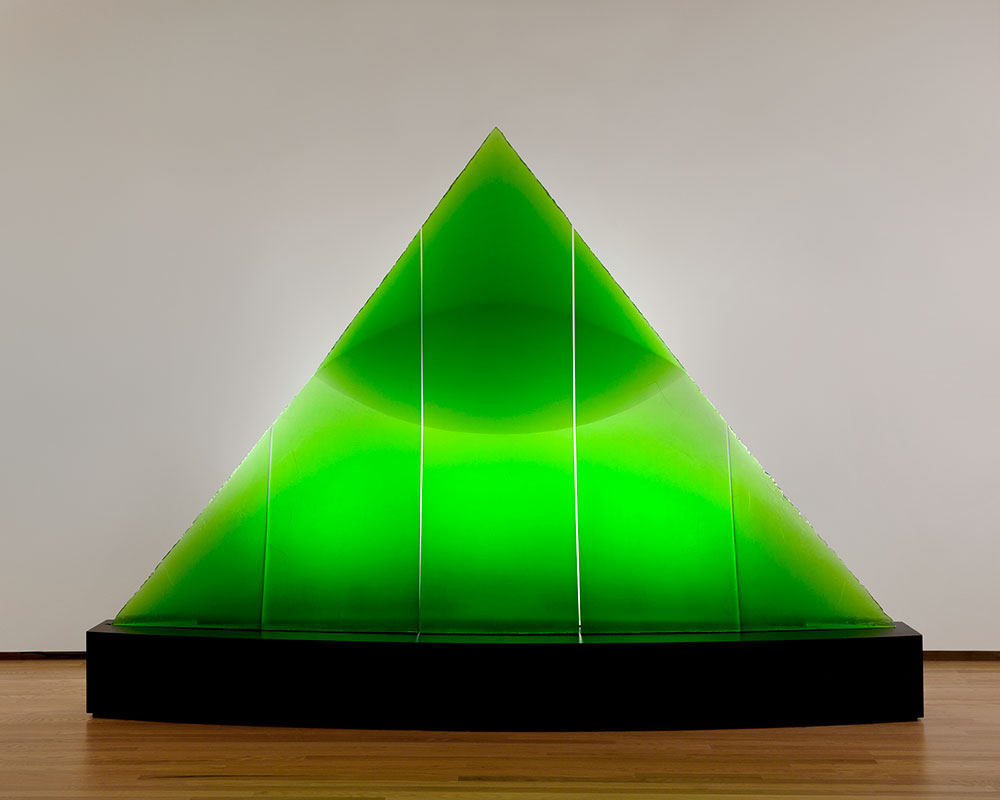
Green Eye of the Pyramid, 1993-1997, Cast glass, Gift of Lisa Shaffer Anderson and Dudley Buist Anderson, © Stanislav Libenský and © Jaroslava Brychtová, 2017.1
Green Eye of the Pyramid, 1993-97
Bold in size and color and dynamic in form and intention, this sculpture presents the essence of Brychtová and Libenský’s collaborative work. The width of the pyramid belies the thinness of the cast glass, and the seemingly flat expanse conceals a depth that is revealed by means of transmitted light. The shape of an eye nestles at the center of the work, combining individual shapes into explorations of geometry and space.
Explore all the Brychtová and Libenský works in the Chrysler Museum collection.
-Carolyn Swan Needell, Ph.D., Carolyn and Richard Barry Curator of Glass

